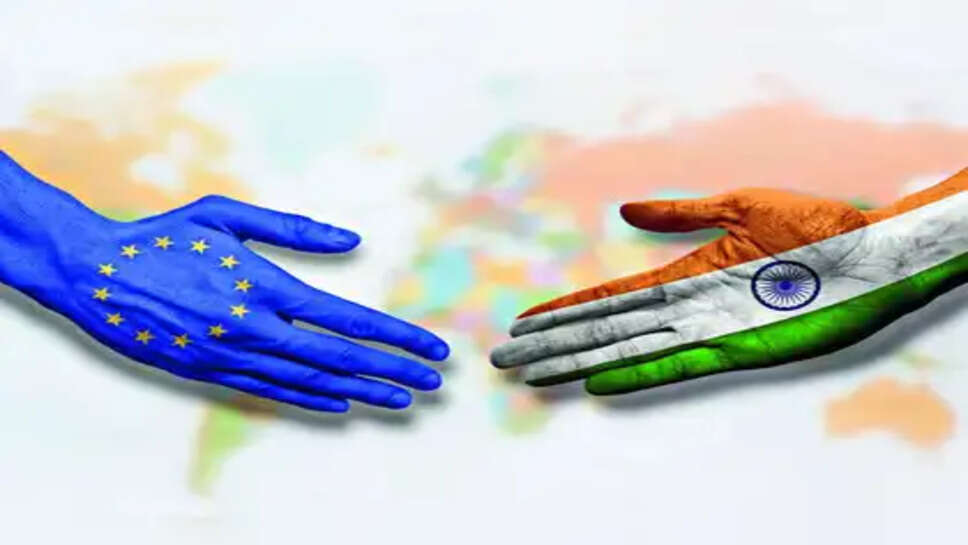Food Safety Friction Slows Progress on India-EU Free Trade Agreement

Negotiations between India and the European Union (EU) over a proposed free trade agreement (FTA) continue to face significant hurdles, with food safety regulations emerging as a major sticking point. A recent EU assessment has emphasized that “intense work” is still required to bridge fundamental gaps between the two sides, especially concerning Sanitary and Phytosanitary (SPS) measures—technical terms for food and plant safety rules.
Even as talks enter advanced stages, this disagreement underscores the complexity of balancing market access with regulatory sovereignty. The finalisation of the India-EU trade pact, long in the making, now hinges on resolving these critical issues.
Long Road to Partnership
India and the EU first initiated FTA negotiations in 2007, but talks stalled in 2013 due to disagreements over tariffs, data protection, and market access. They resumed in earnest in 2022, encouraged by shifting global dynamics, trade diversification goals, and a shared interest in countering China’s dominance.
Both sides see the trade agreement as a strategic step: for India, it opens access to high-value European markets; for the EU, it brings opportunities in a growing, populous economy eager to modernize its infrastructure and consumption base.
Despite high-level commitment and nearly two dozen negotiation rounds, a few contentious issues remain.
Food Safety: A Fundamental Divide
The heart of the deadlock lies in how each side views food safety and risk. The EU adheres to what it calls the “precautionary principle,” which restricts certain imports unless they are proven safe to a high degree of scientific certainty. India, however, views this as a trade barrier masked as a public health safeguard.
Indian officials argue that the EU’s SPS standards are often “arbitrary,” “non-transparent,” and not grounded in globally accepted benchmarks, such as those of the Codex Alimentarius Commission. These rules affect a range of Indian exports—from spices and cereals to dairy and seafood.
Indian exporters have repeatedly expressed frustration over stringent testing and certification requirements that delay shipments or reject them outright, even when they comply with domestic standards or those accepted by other major economies like the US or ASEAN countries.
EU’s Side of the Story
On the flip side, the EU maintains that food safety cannot be compromised for trade gains. European consumers, they assert, demand the highest quality standards—whether in pesticide residue levels, GMO content, or animal welfare. EU negotiators insist that any imported product must comply with local regulations, no matter where it's produced.
This impasse isn’t limited to raw agricultural goods. It also spills over into processed foods, dairy products, and wine and spirits, where geographical indications (GIs), labeling, and packaging standards further complicate mutual understanding.
The latest EU report stresses that “intense work” is needed to find common ground on SPS provisions that ensure public safety without unnecessarily obstructing trade.
Tariffs vs Non-Tariff Barriers
While India has shown willingness to lower tariffs on some EU goods, it is increasingly wary of what it calls “non-tariff barriers” like SPS rules and technical barriers to trade (TBT). These, India believes, undermine the spirit of trade liberalisation.
At the same time, the EU is pushing India to reduce its high duties on wines, automobiles, and high-end electronics—products that face significant import costs in the Indian market.
The fundamental difference is clear: India wants regulatory flexibility and wider access for its labor-intensive exports, while the EU wants guarantees of compliance with its regulatory norms and broader access for its capital-intensive goods and services.
Progress in Other Areas
Not all is bleak. Significant headway has been made on several other fronts, including digital trade, environmental standards, customs procedures, and dispute resolution frameworks. Both sides have also moved forward in discussions around a separate Investment Protection Agreement (IPA) and a Geographical Indications Agreement.
The digital and green transitions—core themes for the EU—are also being weaved into the broader economic partnership. India, too, is increasingly aligning its industrial policies with global ESG (Environmental, Social, and Governance) standards.
Still, these side agreements can’t progress unless the central trade pact finds resolution—particularly on agriculture and SPS issues.
Political Push Needed
Officials from both sides recognize that resolving the SPS deadlock will require more than technical discussions—it needs political will.
India’s leadership is wary of conceding too much regulatory autonomy, especially in food and health matters that touch the lives of millions of small farmers and consumers. On the other hand, the EU must contend with strong domestic lobbies that oppose relaxing standards for imports, citing health and safety.
A breakthrough, if it comes, will likely be the result of high-level political negotiations, rather than just bureaucratic back-and-forth.
Why It Matters
The India-EU trade pact, if concluded, would be one of the largest of its kind. With the EU already India’s third-largest trading partner and a key source of investment, a comprehensive FTA could enhance bilateral trade by up to 30% in the next few years.
For the EU, it offers a way to diversify trade away from China and deepen ties with a democratic, fast-growing economy. For India, it could be a crucial pillar in its broader export-led growth strategy, aligned with initiatives like Make in India and Atmanirbhar Bharat.
Failure to resolve the remaining issues, however, would mean a lost opportunity—not just in economic terms, but also in geopolitical influence and global trade leadership.
Looking Ahead
As India prepares for its next round of talks with EU representatives later this year, the path forward will likely include compromises on both sides. Mutual recognition agreements, phased adoption of standards, and science-based assessments could form the core of potential solutions.
If successful, the deal could set a global example of how diverse regulatory regimes can co-exist through diplomacy, mutual respect, and innovation.
Until then, the message from Brussels remains clear: much work remains to be done—and the clock is ticking.
.jpg)